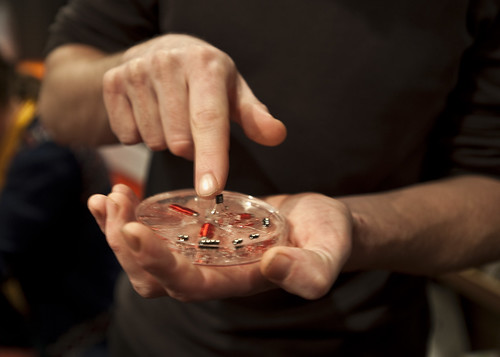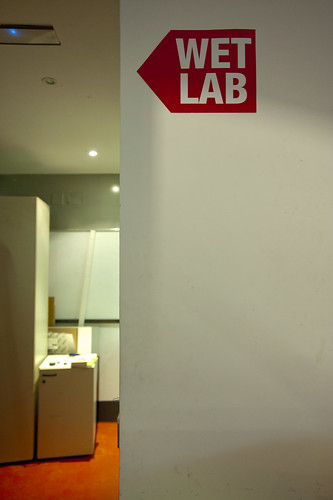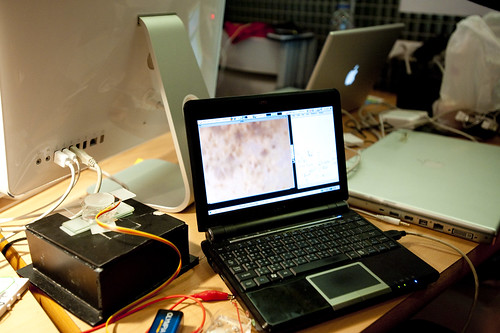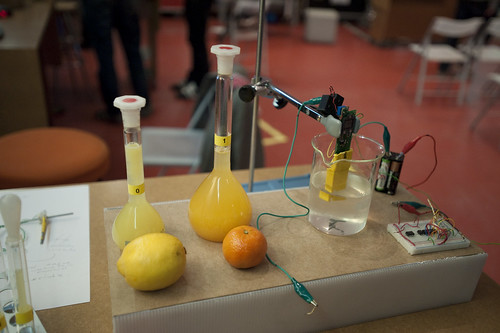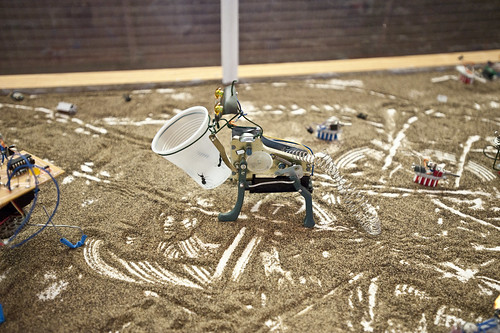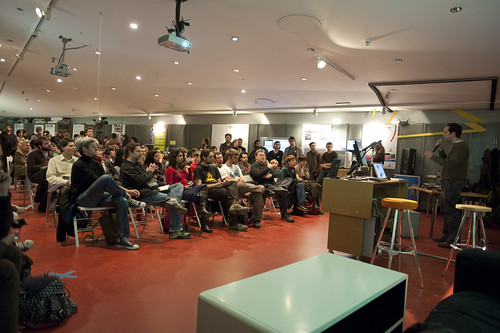No almost back to the Laboratory after a fantastic week in Madrid at Medialab Prado where I was helping run their annual Interactivos workshop/activityshop. This one happened along with Critical Art Ensemble and, of course, all the fine folks at Medialab Prado.
What is this thing, anyway? Well, it’s something with which I am happy to have participated, but I’m also jealous because it is mostly an opportunity to spend two solid weeks working on your art-science-design-technology project. We received 79 submissions and selected nine projects to participate. The makers/scientists/artists showed up and got to it. There were occasional interruptions for fine foodstuffs, talks from invited speakers, late nights with plenty of Rioja and co-labor across projects. There were a couple of other events happening in Madrid at the same time — Vida 11 where my good pal Jed Berk was exhibiting the ALAVs. There was also ARCO the big Spanish contemporary art faire which I slashed through in about five hours while the workshopees were sleeping in, hung over from the previous night/morning. (We kept mostly a forward-time-shifted schedule, it seems, from my usual routine.)
Garage Science also had invited submissions for papers on the “garage science” topic, which I sadly missed. I was especially bummed to have missed Taeyoon Choi, my alternate reality brother, who gave a talk on Urban Protest 2.0. Dang. The other papers sounded super swell and can be found here. There was a talk called Karakuri: Ancient Japanese robot craft by Kirsty Boyle and one on children and digital learning by Bronya Calderon. The Medialab Prado folk are pretty diligent about capturing stuff so hopefully we’ll see some of that video they shot online soon.
I won’t go into an exhaustive review and description of the nine projects — they’re all here online already.
What should be said is the importance of this vector towards creating the world and its objects and experiences and points of interaction. What is this exactly? It’s about circulating the imagination and swerving along paths that may be different from the now quite old school mechanics for materializing the imagination. Those old means of turning ideas and the imagination of willful people into “projects” that are accomplished as quickly as possible, with Gantt charts, where vision and inspiration are thrown out for miserable, soul-crushing reasons that often come from those with only a vision to make their quarterly numbers or look good for the guy who’s going to promote them. In a word: selfish, uninspired, crap. The crushing moment is often the word “but”, often followed by statements like, “we have customers” or “we have a hard deadline” or “we have to get real.”
All of this stuff at Garage Science is Garage Science Fiction in the best of ways. It’s materialized, working stuff — not inert props. It circulates ideas and new considerations and sets off alarms at the boundaries where existing practices have gone a bit stale and uninspired. The ideas come from waking dreams and inspired conversations with people who think different and act different. Being at Garage Science was like finding old friends who I had never met. Fantastic stuff. Activated, engaged and fun in the truest, collaborative sense. What goes on at things like Garage Science is more than the prototyping work itself, its about prototyping a new way to work that isn’t about intellectual property, sales projections, markets analysis, focus groups, “design” done by retailers and accountants. These idea-materialization practices are certain to surge in the midst of this collapse or crisis or indictment against bad old habits that lead to too much bad crap for sale.
Garage Science is a reminder that no one gets bored when they work from their own own ideas and imagination. There should be way more of this happening, especially nowadays.
